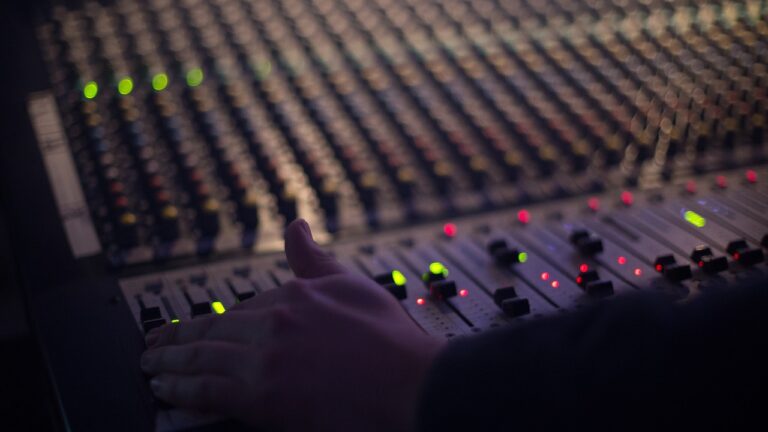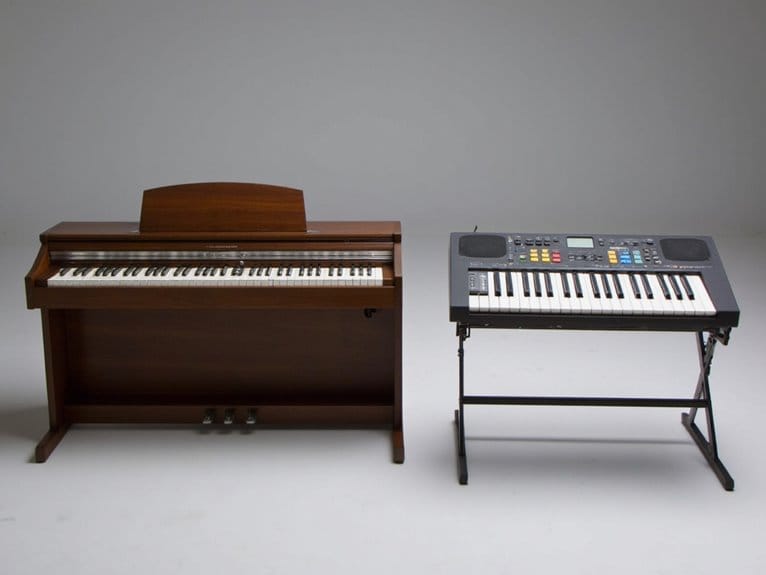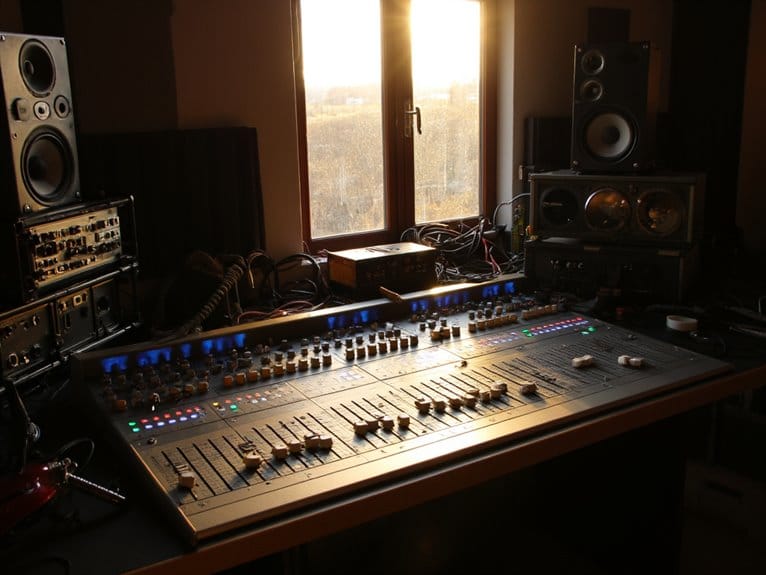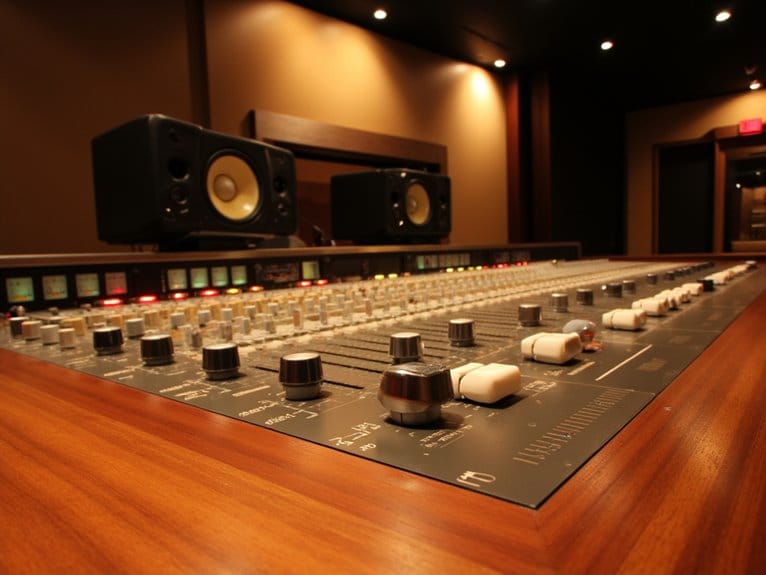What Is the Equivalent of E#?
E# is equivalent to F, a fascinating harmonic phenomenon where two distinct notes share the same pitch, frequency, and musical function, yet differ in notation, sparking intriguing implications for musicians, composers, and music theorists. This enharmonic equivalent relationship has significant consequences for music composition, performance, and theory, as it affects interval inversions, chord progressions, and scales. By embracing this quirk, musicians can refine their skills, expand their musical vocabulary, and tap into new creative possibilities. As you delve into the intricacies of E# and F, you'll uncover a rich tapestry of sound and harmonic possibilities waiting to be discovered.
We are supported by our audience. When you purchase through links on our site, we may earn an affiliate commission, at no extra cost for you. Learn more.
Understanding Enharmonic Equivalents
While musicians often focus on the familiar letter names of notes, a deeper understanding of music theory reveals that certain notes, known as enharmonic equivalents, possess identical pitch but differ in notation. This phenomenon is rooted in enharmonic relationships, where notes with different letter names share the same pitch. For instance, C# and Db are enharmonic equivalents, as they occupy the same frequency on the musical spectrum. Additionally, interval inversions can be affected by enharmonic equivalents, as the quality of an interval remains unchanged despite a change in notation. In addition, grasping these concepts is essential for musicians seeking to decipher the intricacies of music theory and expand their musical vocabulary. By recognizing enharmonic equivalents, musicians can refine their composition and performance skills, ultimately elevating their artistry.
The Pitch of E# and F
As we plunge into the domain of enharmonic equivalents, it becomes apparent that E# and F share an intriguing relationship, with E# being the enharmonic equivalent of F, a phenomenon that sparks curiosity and invites further investigation. Delving deeper, we find that the pitch of E# and F are identical, with both notes producing the same frequency. This frequency relationship is rooted in the harmonic intervals that govern Western music, where the distance between E# and F is precisely one half-step. This remarkable equivalence has significant implications for musicians, composers, and music theorists alike, highlighting the complexities and nuances of the musical spectrum.
E# in Musical Notation Systems
In the domain of musical notation systems, the enharmonic equivalent E# assumes a unique identity, presenting a fascinating paradox in which a single pitch is represented by two distinct symbols. This anomaly arises from the notation systems evolution, where the need for simplicity and clarity led to the development of enharmonic equivalents. However, this convenient shorthand creates Music theory exceptions, where a single note can be notated in two ways. The E# phenomenon highlights the intricate dance between notation systems and music theory, where exceptions and paradoxes are an integral part of the game. By embracing these quirks, musicians and theorists can better understand the complex harmony between notation and sound.
Chord Progressions and Scales
Chord progressions and scales, the harmonic and melodic building blocks of music, are inextricably linked, yet their intricate relationships often lead to paradoxes that challenge even the most seasoned musicians and theorists. The E# equivalent adds a new layer of complexity to this already intricate web. To navigate these complexities, musicians often employ modal interchange, borrowing chords and melodies from parallel modes to create harmonic tension and release. This raises intriguing questions about the nature of key and tonality.
- How do chord progressions influence our perception of key?
- Can modal interchange be used to create a sense of resolution?
- How do scales inform our understanding of harmonic function?
- Can E# be used to create novel modal interchange opportunities?
Composing With E# and F
By incorporating E# and F into our compositional toolkit, we can trigger fresh harmonic possibilities that challenge traditional notions of key and tonality, while also offering novel opportunities for modal interchange and melodic exploration. This uncharted territory invites microtone exploration, where we can plunge into the subtle nuances between traditional notes. Frequency manipulation becomes a vital aspect, as we navigate the subtle shifts in pitch to create a rich tapestry of sound. In doing so, we can craft melodies that oscillate between tension and resolution, adding a layer of sophistication to our compositions. By embracing E# and F, we can redefine the boundaries of harmony and melody, releasing a new dimension of musical expression.
Historical Context of E
From ancient Greek philosophers to modern-day music theorists, the enigmatic equivalent of E has enthralled minds and sparked debates about its role in the harmonic universe. Throughout history, E has played a significant role in shaping the course of music theory, influencing the development of various genres and styles. Here are a few key highlights of E's historical context:
- Era significance: E was a central note in ancient Greek music, used to convey emotions and tell stories.
- Cultural influence: The use of E in medieval music helped to establish the foundation for Western classical music.
- Theoretical debates: The equivalent of E has been a topic of discussion among music theorists, with some arguing it's a fundamental frequency, while others see it as a cultural construct.
- Artistic inspiration: E has inspired countless composers, from Bach to Beethoven, to create works that continue to resonate with audiences today.
Practical Applications of E
Beyond its historical significance, the equivalent of E finds tangible expression in various musical contexts, where its unique sonic properties are utilized to evoke distinct emotional responses and add depth to compositions. In music theory, E's mathematical underpinnings, rooted in natural logarithms and mathematical constants, allow for the creation of harmonically rich and complex sounds. For instance, the use of E in chord progressions can create a sense of tension and release, while its application in melody writing can produce hauntingly beautiful phrases. By harnessing the power of E, musicians and composers can tap into its emotional resonance, crafting music that resonates with listeners on a profound level.






